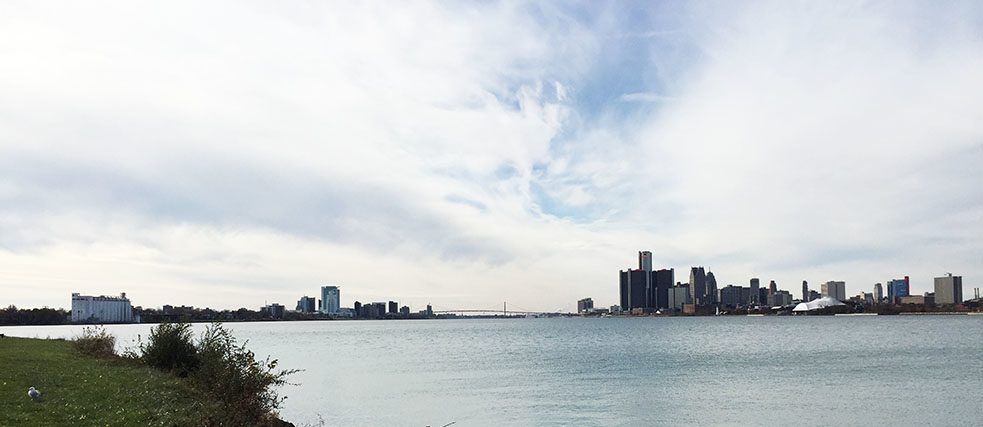Detroit
Belle Isle

What do an abandoned house, Friedrich Schiller, a car’s electronic ignition system, and the national border between the USA and Canada have in common? The answer is Belle Isle Park in Detroit. The park is to be found on an island in Detroit River, directly on the border with Canada. At the island’s westernmost point, the view extends from Detroit’s skyline and across Ambassador Bridge to the Canadian side of the river.
Designed in 1880 for local residents as an urban oasis for recreation and leisure, the island park features established fauna and flora combined with architecturally varied buildings, fountains, lagoons, and green spaces. Belle Isle Park is home to an old aquarium, a conservatory, a zoo, a yacht club, and a museum. What is more, German immigrants living in Detroit erected a statue of Friedrich Schiller in the park in 1900 to pay tribute to his influential work. At this time, first- or second-generation German immigrants made up over 45% of Detroit’s population.
The numerous green spaces, buildings and statues are accessible by car thanks to the extensive network of roads that criss-cross the 2.5-mile-long island.
The Motor City filed for bankruptcy in 2013, a course of events that did not leave Belle Isle Park unscathed, either. Unavoidable budget cuts forced parts of the oasis into a ruinous state and hopeless dilapidation. Following the bankruptcy, the State of Michigan signed a 30-year leasehold contract that released the city from any substantial costs for the park. Though the park is now run by the state, this does not reduce its importance for the citizens of Detroit.
Belle Isle Park is thus a good example of the energy to be found in Detroit when it comes to community projects that seek new ways to use the available space, or to reshape it through a variety of different approaches.